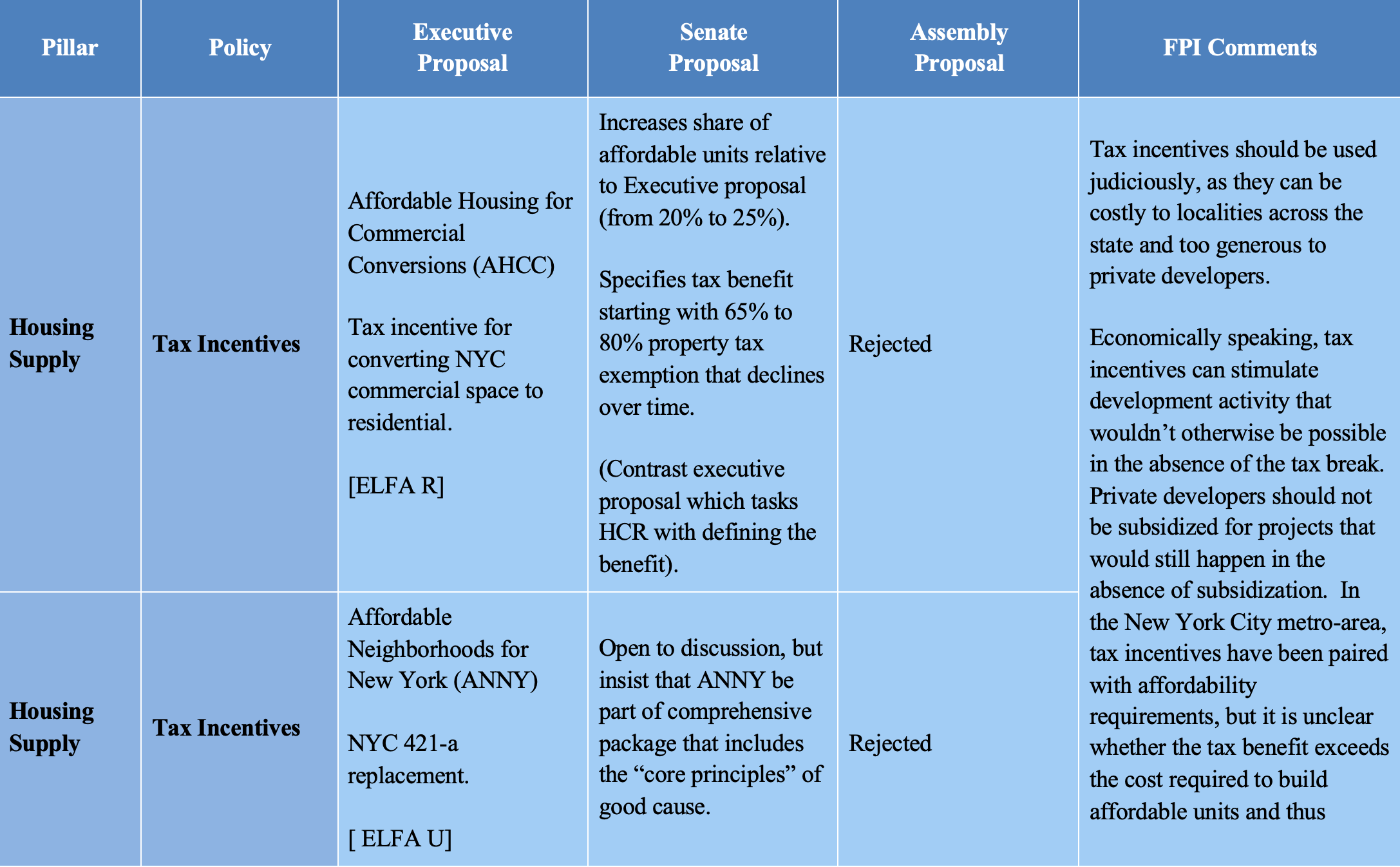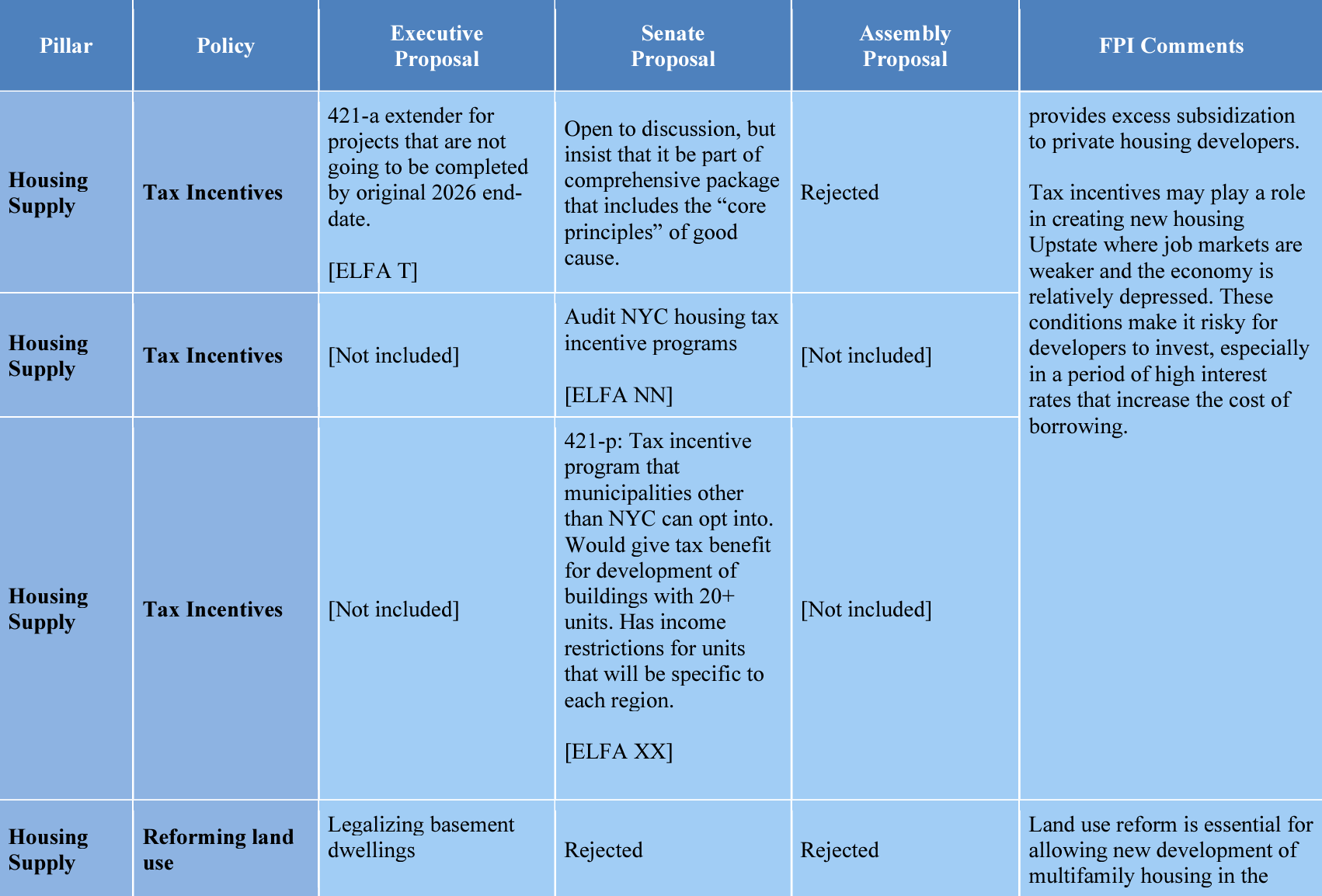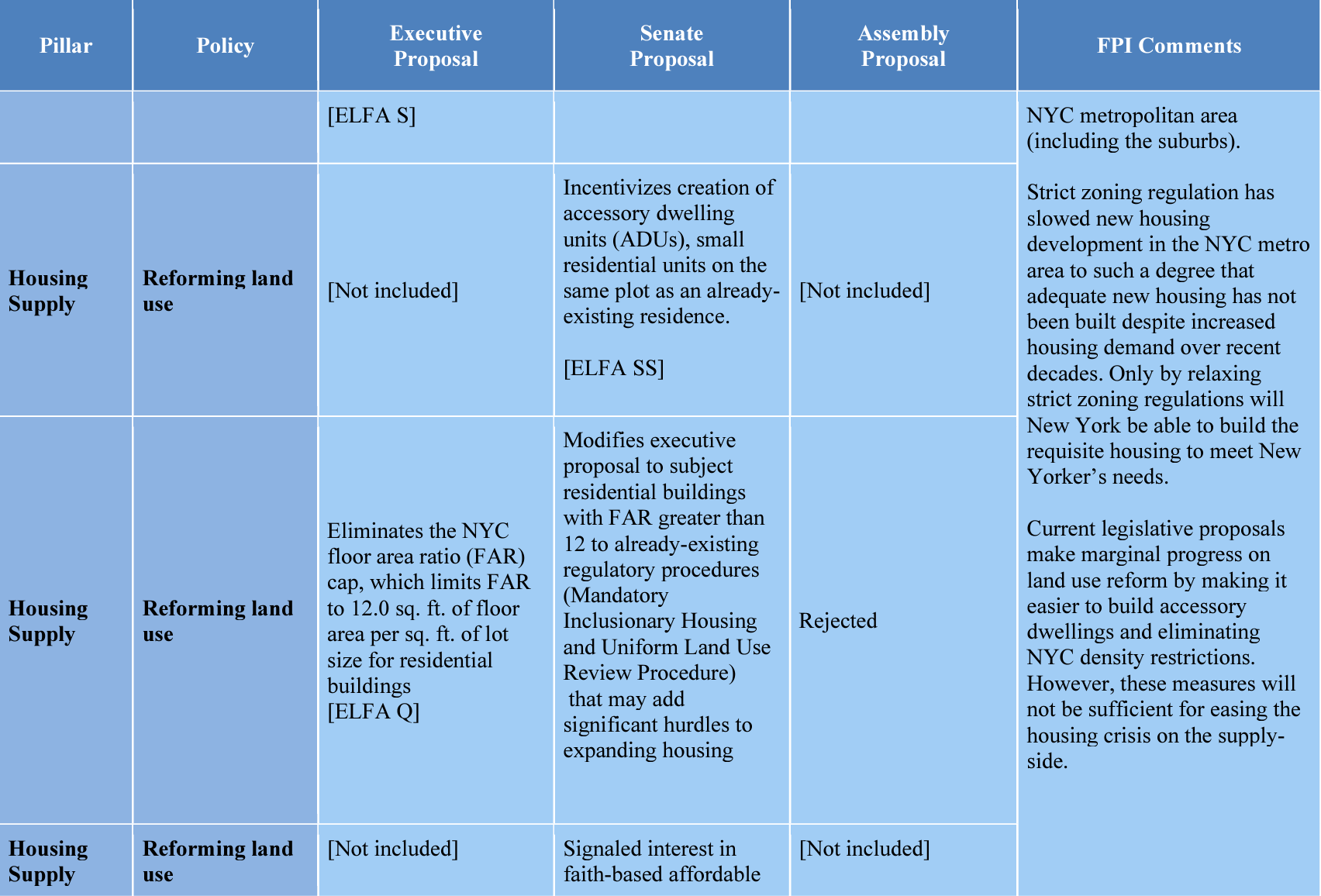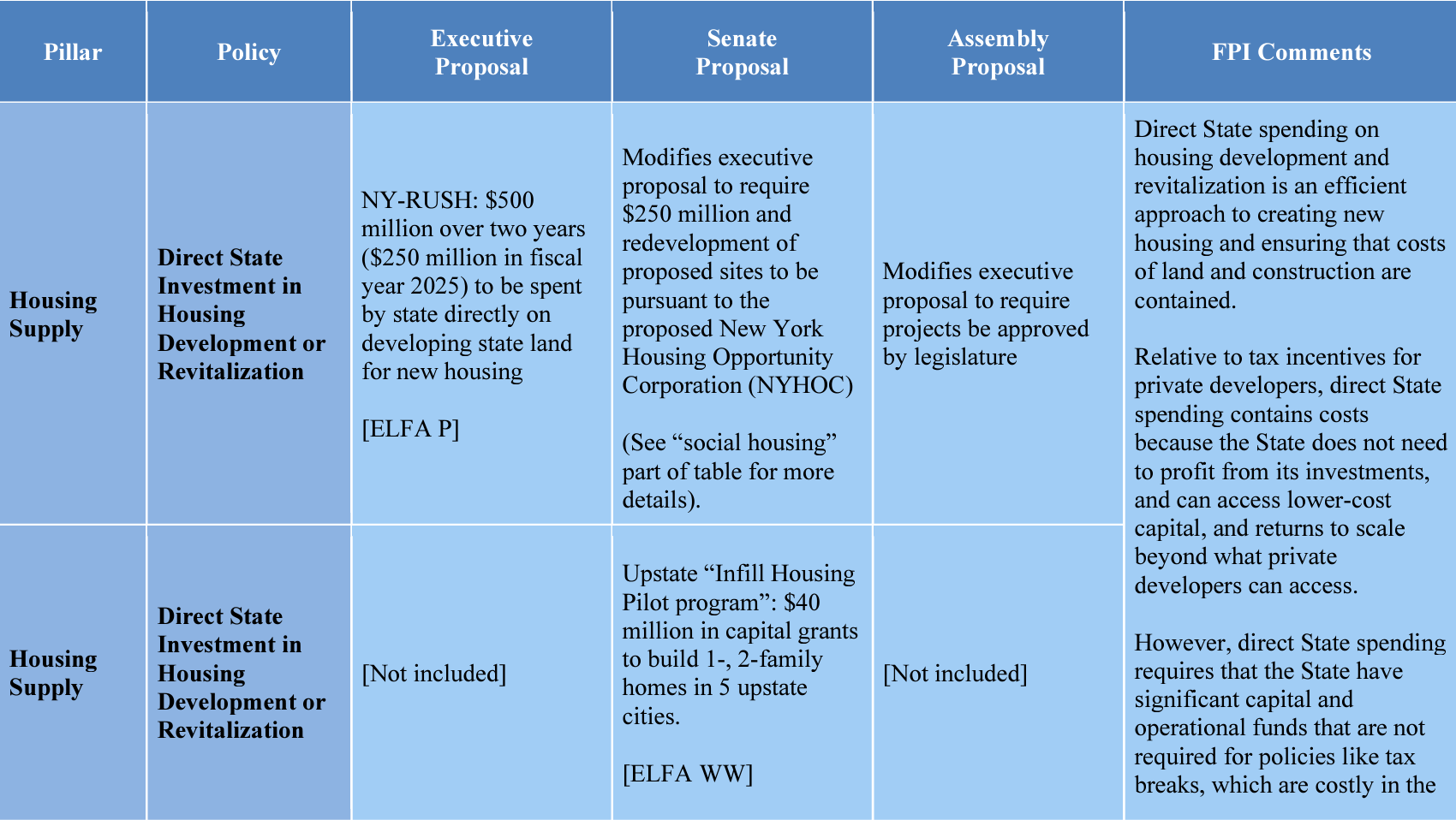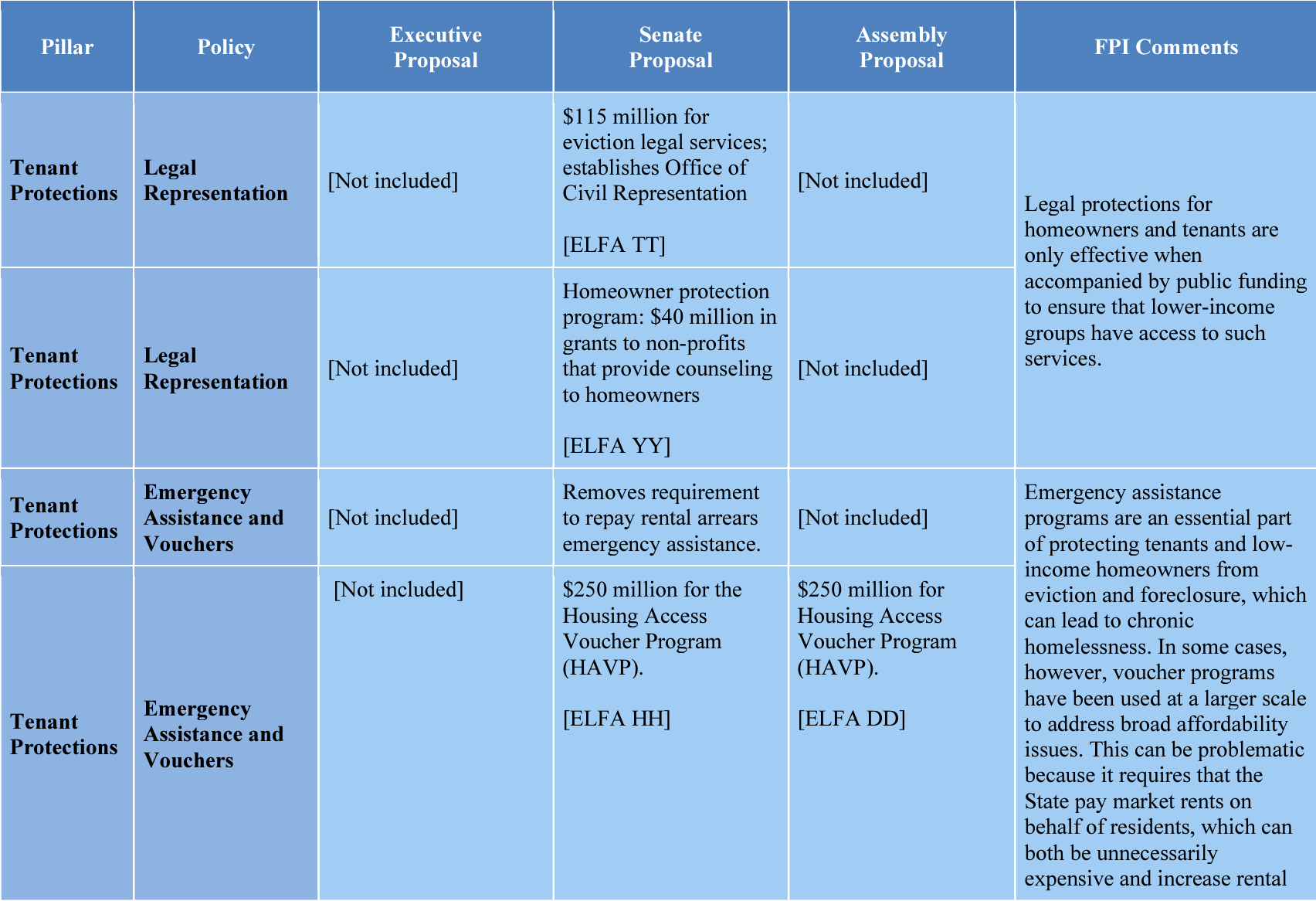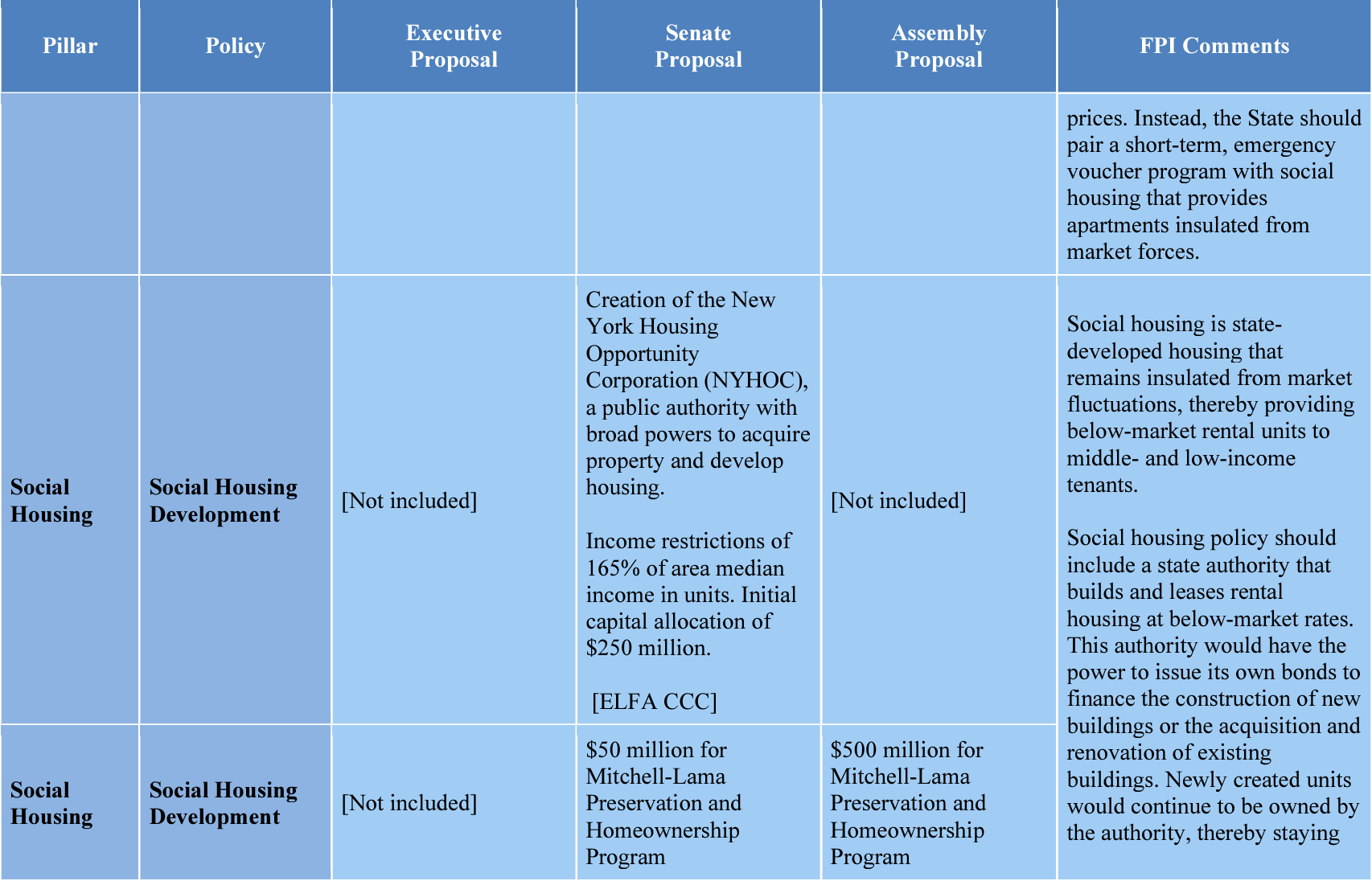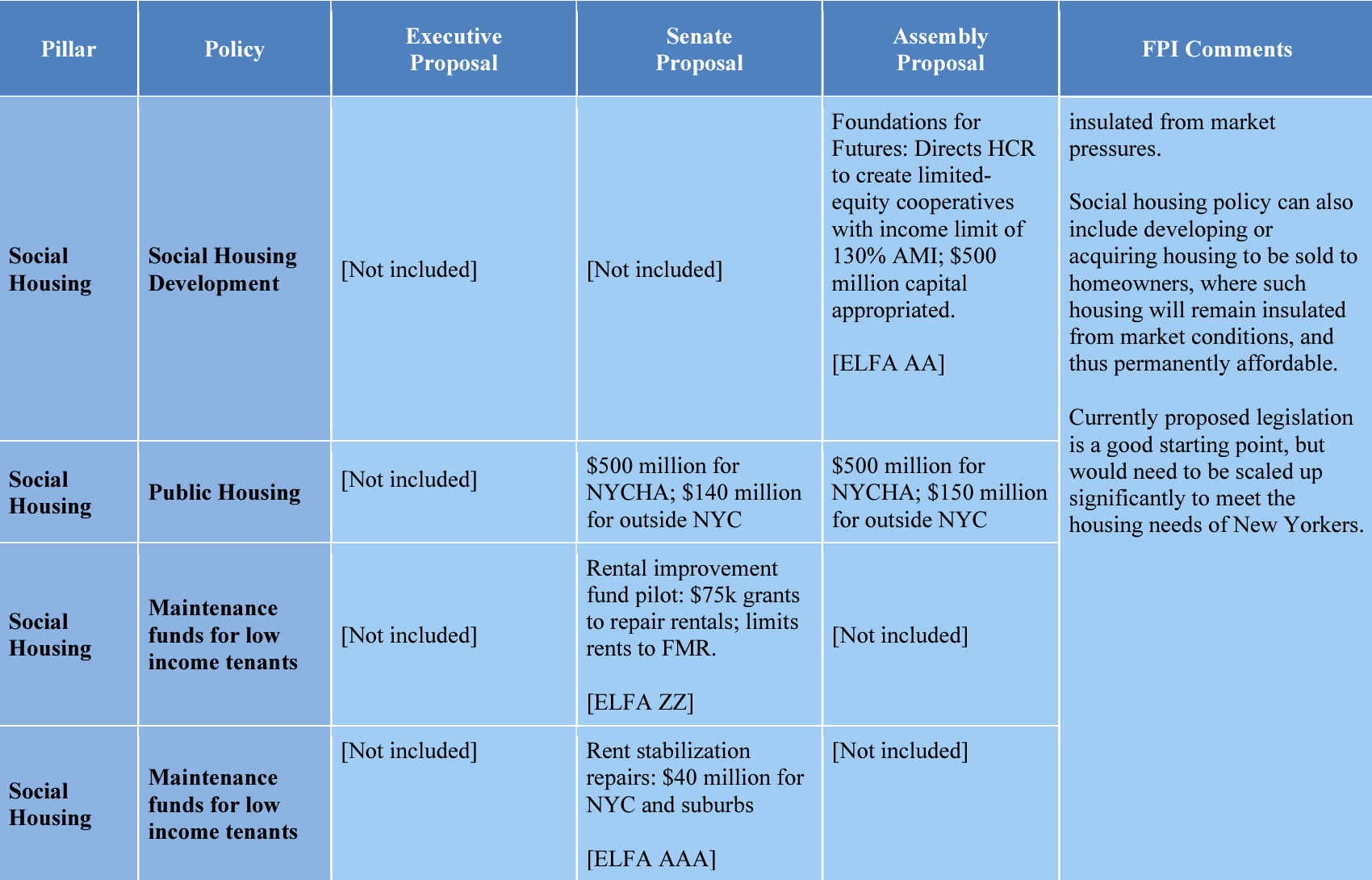A Step in the Right Direction, But Not Far Enough
Housing has again become a key area of negotiations in the current budget cycle. This year’s executive budget laid out a far narrower plan to address New York’s housing affordability crisis than last year’s budget proposal. Meanwhile, the Senate brought forward a new set of housing policy recommendations in its one-house budget proposal, attempting to comprehensively address the housing supply and affordability issues that currently plague the state. But what are these proposals — and are they enough to address New York’s housing crisis?
This year’s proposals, particularly those put forward by the Senate, address each of the three pillars of housing policy that are essential to creating a just and affordable housing landscape in New York.
Three Pillars of Housing Policy: Increasing Supply, Protecting Tenants, and Building Social Housing
As described in FPI’s fiscal year 2025 budget briefing, a comprehensive set of housing policies must address three dimensions of housing needs in the state:
- Increasing Supply: ensuring the sufficient supply of market rate of housing, which must involve land use reform (i.e., eliminating restrictive zoning regulations) and may involve incentives or direct investment to stimulate new construction;
- Protecting Tenants: protecting existing tenants from market pressures and from predatory acts by landlords; and
- Building Social Housing: publicly financing and constructing below-market housing for low- and middle-income households.
Only by addressing each of these dimensions can New York develop enough high-quality housing to meet the needs of all New Yorkers, so that families are able to maintain financial stability as their needs evolve. The table below organizes the current executive and legislative housing proposals into FPI’s three pillars of housing, along with commentary on the policy options and ensuing debate. The table below presents the full range of policy options currently being debated by policymakers in Albany. The executive proposals focus mainly on the “housing supply” pillar but make relatively limited interventions. The Assembly measures focus on tenant protections and social housing but fail to move the needle on overall housing supply, thus creating concern that any affordability gains will be swallowed by a deepening supply shortage. Finally, the Senate proposal is the widest ranging and addresses all three pillars of strong and effective housing policy. Still, even with the Senate’s full slate of proposals, FPI finds that the Senate plans lack the scale and boldness needed to truly tackle New York’s ongoing housing crisis.
FPI Recommendations: Further policy action needed to truly address the housing crisis
Solving a problem as dire as New York’s housing crisis will require deep, sustained investment and transformative policy action beyond this year’s executive and legislative proposals. In particular, tackling the restrictive local land use regulations (i.e. zoning), especially in downstate New York, is essential to increasing the supply of housing for households across the income distribution. None of the budget proposals sufficiently address local land use restrictions, and thus will not translate into the necessary housing supply increases that New York needs after years of un-met demand. Similarly, the proposal to establish the New York Housing Opportunity Corporation falls short of providing the new facility with enough funds to provide sufficient affordable housing options, and the lack of explicit movement towards expanding rent stabilization in the state leaves room for continued affordability constraints for tenants. Still, the Senate’s housing proposals have created a strong starting framework for a comprehensive approach to solving the housing crisis. With expanded changes to restrictive zoning regulations and deeper investments in both housing supply and affordability, the State has the opportunity to enact the most consequential suite of housing policy in decades.
Summary of Executive, Assembly, and Senate Housing Policy Proposals
Organized according to FPI’s pillars of housing policy
